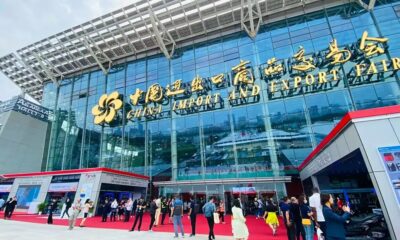Asia
China’s post-Congress diplomatic attack
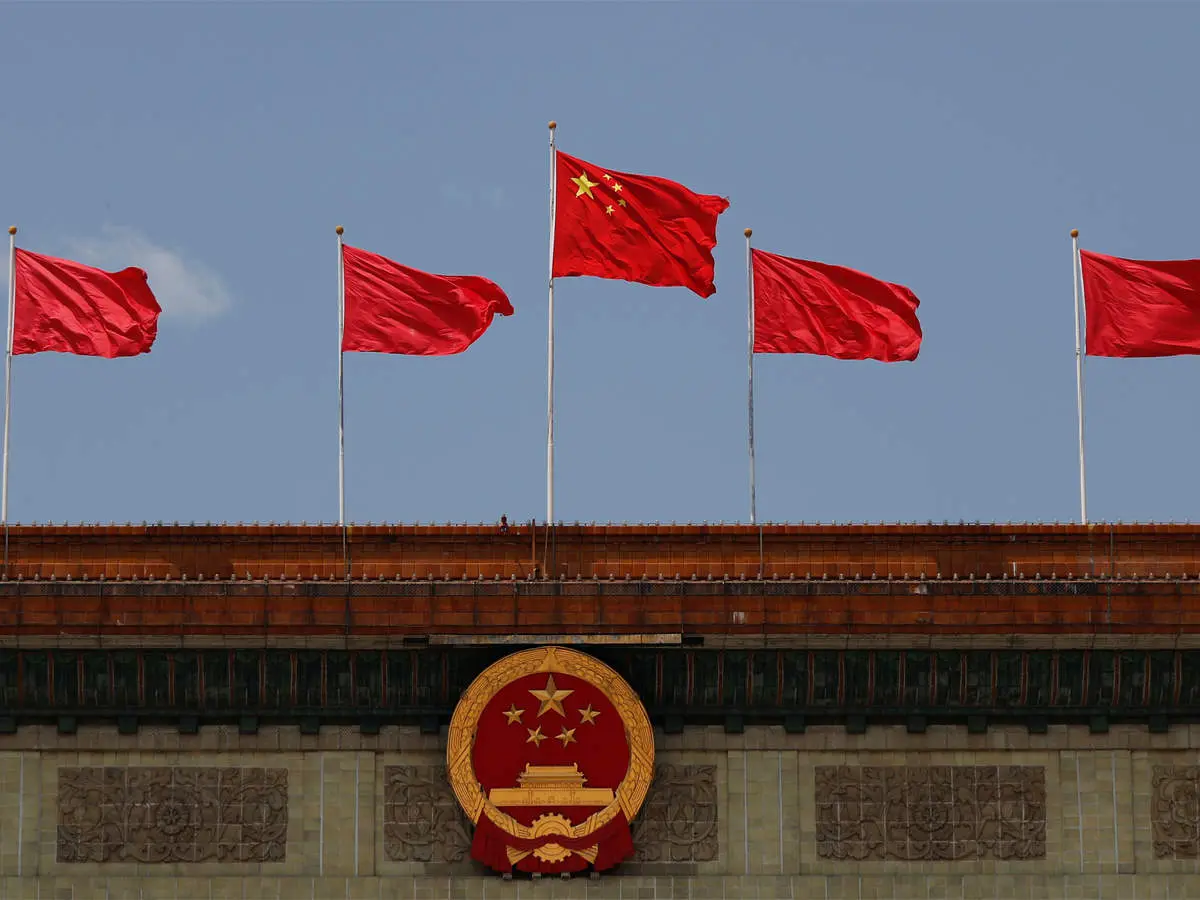
Following the 20th Congress of the Communist Party of China (CPC), Beijing is to welcome several foreign leaders.
The Chinese Foreign Ministry announced that General Secretary of the Communist Party of Vietnam (CPV) Central Committee Nguyen Phu Trong, Pakistani Prime Minister Shahbaz Sharif, Samia Suluhu Hassan, president of the United Republic of Tanzania, and German Chancellor Olaf Scholz will pay official visits to Beijing.
The first visitor is from Vietnam
The first visit to Beijing after the CPC Congress came from Nguyen Phu Trong, General Secretary of the Communist Party of Vietnam Central Committee.
Vietnamese leader Nguyen paid an official visit to China from October 30 to November 2 at the invitation of Xi Jinping, general secretary of the CPC Central Committee and Chinese President.

Photo: October 31, 2022, Xinhua
This visit also is the first overseas visit of Nguyen Phu Trong following the CPV’ 13th National Congress.
During the meeting between the two leaders at the Great Hall of the People in Beijing, capital of China, the two sides agreed to make effort to push the China-Vietnam comprehensive strategic cooperative partnership to a high level.
The joint statement of the two sides stressed that while the world is undergoing highly complex and unpredictable historical transformation and entering a new period of turbulent change, China and Vietnam relations will be evaluated and developed from a strategic and long-term perspective.
Cooperation against colorful revolution
Both sides agreed to keep the China-Vietnam Steering Committee for Bilateral Cooperation mechanism active, coordinate planning and promote exchanges and cooperation between the two countries in the areas of foreign affairs, defense, security and law enforcement. The two sides are also ready to work collaboratively to strengthen the fight against terrorism and resist “colorful revolutions”, it was noted.
It was reported that the two sides won’t let maritime and other relevant issues between the two countries affect how they deal with them appropriately. Particularly, it was agreed that it is important to properly manage the differences in the South China Sea and to maintain peace and stability.
The Vietnamese side reiterated their commitment to follow the one-China policy and expressed their firm opposition to Taiwan independence separatist activities.
Chinese media commented that the visit is an indication that party-to-party communications will become increasingly important in relations between the two countries. In addition, Chinese experts voiced expectations that efforts by the U.S. and its allies to cause conflict between China and Vietnam will no longer be successful.
Pakistan is a high priority in neighborhood diplomacy
The second visit after the CPC Congress came from Pakistani leader Shahbaz Sharif.
Pakistani Prime Minister Sharif met Xi Jinping in Beijing.
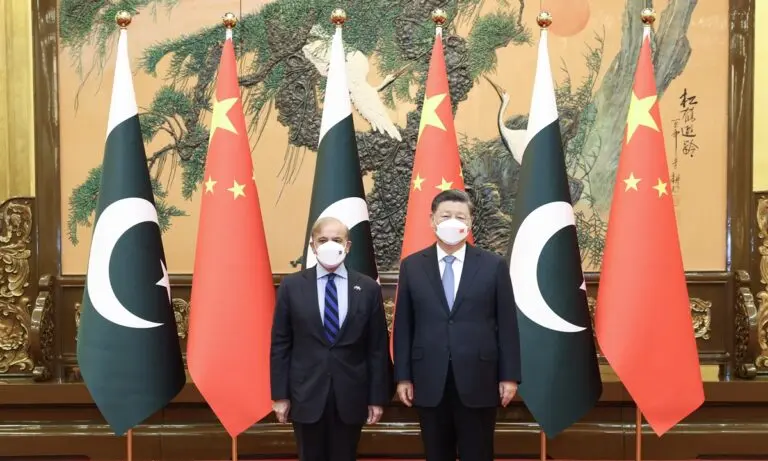
Photo: November 2, 2022, Xinhua
Xi noted that China has been addressing China-Pakistan relations from a strategic and long-term perspective and keeping relations with Pakistan at the forefront of good neighborhood diplomacy.
Xi thanked Pakistan for its support on issues vital to China’s major concerns, stressing that they firmly support Pakistan’s preservation of national sovereignty, territorial integrity, and development interests, and achieving stability, unity, development, and prosperity.
China-Pakistan Economic Corridor to be an exemplary project
Pointing out that China, which has a global expansion policy, will continue to create new opportunities for the world countries, especially Pakistan, with its own development, Xi said they will advance the construction of the China-Pakistan Economic Corridor (CPEC) with greater efficiency and make this project an exemplar of high-quality Belt and Road cooperation.
Xi stressed the importance of joint efforts by the two sides to accelerate the construction of Gwadar Port’s infrastructure facilities and create conditions for projects such as the Karachi circular railway.
Expressing that they expect Pakistan to export more quality agri-products to China, Xi said that in addition to expanding cooperation with Pakistan in new energy fields such as digital economy, e-commerce and photovoltaic, they will continue to improve cooperation in industry, agriculture, science and technology and to support Pakistan in stabilizing its financial situation.
Xi underlined that China and Pakistan should maintain their strong cooperation in multilateral mechanisms, strengthen coordination in important international and regional problems, and uphold true multilateralism, international fairness, and the shared interests of developing countries.
‘China’s development cannot be prevented’
Shahbaz Sharif also pointed out that deepening Pakistan’s all-weather strategic cooperative partnership with China is the cornerstone of Pakistan’s diplomacy.
Hailing the China-Pakistan Economic Corridor’s significant impact on Pakistan’s social and economic development, Sharif said Pakistan is ready to work with China to accelerate the high-quality construction of the Belt and Road.
“The world cannot operate without China, and China’s development cannot be isolated or contained by any force” Sharif noted at the meeting.
The Chinese press highlighted the importance of the Sharif’s visit right after the CPC Congress, while a greater focus was put on the advancement of the CPEC and other major infrastructure projects between the two countries when the Sharif came to power earlier this year.
New era with Tanzania
Tanzanian President Samia Suluhu Hassan became the first African head of state to visit Beijing, China after the CPC’s Congress.
On November 3, President Xi Jinping held talks with Hassan at the Great Hall of the People. The two leaders announced the improvement of China-Tanzania relations to a comprehensive strategic cooperative partnership.
At the end of the meeting, the two heads of state signed bilateral cooperation documents covering trade and investment and issued a joint statement on extending bilateral relations to the level of comprehensive strategic cooperative partnership.
Chinese experts expect Hassan’s three-day visit to boost bilateral co-operation and open a new chapter in China-Africa relations.
“We believe that President Hassan’s visit will further bolster the building of a China-Africa community with a shared future in the new era” Chinese Foreign Ministry Spokesperson Zhao Lijian, noted at a routine press conference on Wednesday.
Rais wa Jamhuri ya Muungano wa Tanzania Mhe. Samia Suluhu Hassan akiwa kwenye picha ya pamoja na Mwenyeji wake Rais wa Jamhuri ya Watu wa China Mhe. Xi Jinping katika ukumbi wa The People Great Hall, Beijing nchini China tarehe 03, Novemba, 2022. @venusnyota pic.twitter.com/UleqkNtyUM
— ikulu_Tanzania (@ikulumawasliano) November 3, 2022
Olaf Scholz and the German titans on their way to Beijing
German Chancellor Olaf Scholz, who is expected to arrive in Beijing on November 4th, will be the first G7 leader to visit the country since the start of the Covid-19 pandemic.
Scholz will meet with Chinese leader Xi Jinping and Prime Minister Li Keqiang as part of the Beijing talks. Following Merkel’s last visit to China three years ago, these two leaders have found the opportunity for face-to-face communication, which is acknowledged as an important development.
Scholz’s visit is also interpreted as an opportunity for China to develop cooperation with European countries. Because Olaf Scholz is taking a large delegation to Beijing with him. The CEOs of the German titans will accompany Scholz during the trip: Mercedes, Audi, BMW, Bayer, Volkswagen, Siemens, BioNTech…
Although relations between China and the European Union (EU) have recently deteriorated, China is Germany’s largest trading partner for the past six years and its bilateral trade volume exceeded 245 billion euros (243.43 billion dollars) last year. The Chinese-German trade also directly supports more than 1 million jobs in Germany. In addition, China-EU trade reached $800 billion for the first time in 2021, and two-way investment went beyond $270 billion in cumulative terms.
‘It would be wrong to decoupling from China’
In an earlier interview, Martin Wansleben, managing director of the Association of German Chambers of Commerce and Industry, stressed that Germany cannot leave China and ‘without China, Germany will become even poorer’, adding that “further detachment from China will lead to a loss of prosperity for us.”
German Chancellor Olaf Scholz also wrote for Frankfurter Allgemeine Zeitung about his country’s Chinese policy ahead of his official visit to China.
Scholz said he is opposed to decoupling from Chinese economy but underlined that unilateral dependencies should be reduced.
Noting that Germany’s Chinese policy could only be successful if Europe was integrated with China’s policy, Scholz said that they were therefore in close coordination with European partners and transatlantic friends, including French President Emmanuel Macron, before his trip.
On the other hand, Scholz’s visit sparked controversy in the coalition government. Some people expressed deep concern that the German economy was getting too close to and “over reliant” in China. Even before the visit, calls were made within the coalition government to ‘diversify’ trade with China and “not to be naive in commerce with China.”
Contrary to these claims, the Chinese press states that the Chinese-German economies are complementary and points out that bilateral relations are never a unilateral bond.
Asia
Japan diverges from G7, urging restraint in Israel-Iran conflict
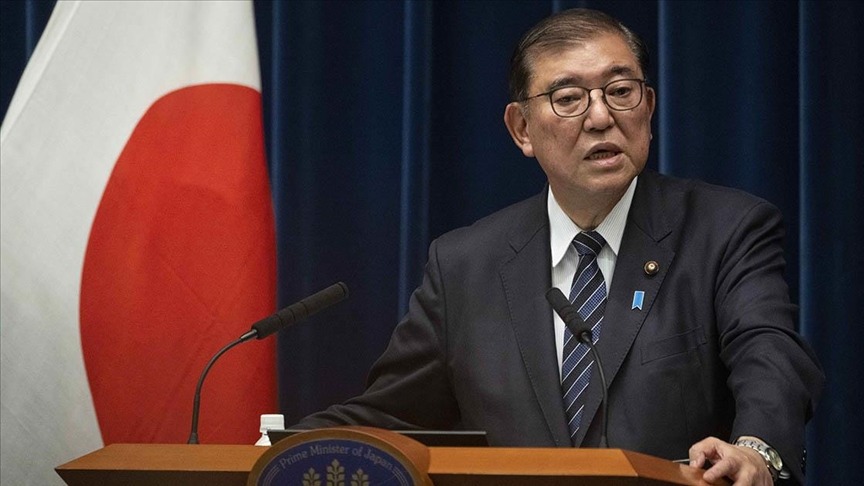
Japanese Prime Minister Shigeru Ishiba has affirmed Tokyo’s position of calling for “maximum restraint” from both Israel and Iran, despite a G7 statement earlier this week that supported Israel’s “right to self-defense.”
During a meeting of ruling and opposition party leaders on Thursday, Ishiba stated, “What the foreign minister said is the stance of the Japanese government. The G7 is the G7,” as reported by Tomoko Tamura, head of the Japanese Communist Party.
Japan, a close US ally in Asia, has long maintained friendly relations with Iran and has historically adopted a neutral approach to Middle East diplomacy, distinguishing itself from the pro-Israel stance of US administrations. Tokyo relies on the Middle East for the overwhelming majority of its crude oil imports.
G7 leaders convened in Kananaskis, Canada, and issued a statement backing Israel’s attacks on Iran. The statement affirmed Israel’s right to self-defense and condemned Iran as the “main source of regional instability and terrorism.” On June 13, when Israel’s attacks on Iran began, Japanese Foreign Minister Takeshi Iwaya declared: “The use of military force while diplomatic efforts are ongoing… is completely unacceptable and a source of deep regret. The Japanese government strongly condemns these actions.”
Iwaya added, “Japan is gravely concerned about the continuation of retaliatory attacks and strongly condemns any actions that could further escalate the situation.”
He continued, “Japan urges all parties to exercise maximum restraint and strongly calls for a de-escalation of tensions.”
During the meeting of party leaders, Tomoko Tamura, head of the Japanese Communist Party, highlighted the apparent contradiction between Iwaya’s statements and the joint G7 communiqué, suggesting the government was applying a “double standard.”
Prime Minister Ishiba responded, “What the foreign minister said is the stance of the Japanese government. The G7 is the G7.”
Meanwhile, the foreign minister announced at a press conference on Friday that a total of 87 Japanese nationals and their family members had been evacuated by land from Iran and Israel. Sixty-six individuals were evacuated from Iran to neighboring Azerbaijan, and 21 were evacuated from Israel to Jordan.
Following additional requests from Japanese citizens, a second land evacuation from Iran is scheduled for Saturday. Currently, there are approximately 220 Japanese nationals in Iran and about 1,000 in Israel.
In preparation for potential air evacuations, the government plans to dispatch two Air Self-Defense Force military transport aircraft to Djibouti in East Africa to have them on standby. With airports in Iran and Israel closed, Iwaya noted that the aircraft could be used if, for example, the airports reopen and conditions permit an airlift.
Asia
Iran-Israel war: Why US discusses regional conflict with Pakistan
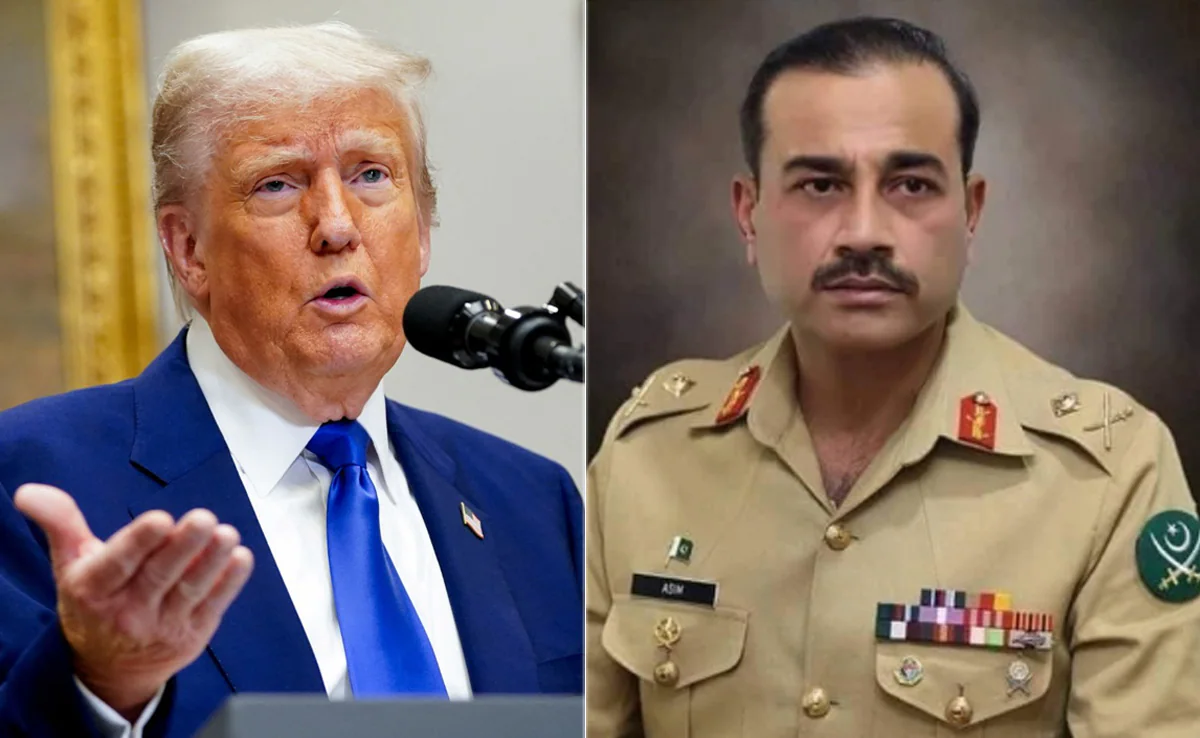
US President Donald Trump and Pakistan’s Army Chief General Asim Munir held a special and important meeting during a time when tensions are rising in the Asian region. The meeting was held on Trump’s invitation and was not open to the media. However, both sides have released official statements afterward, which states that the main topics were discussed
The meeting focused on the ongoing conflict between Iran and Israel, Pakistan–India relations, especially the Kashmir issue, the situation in Afghanistan and future US–Pakistan cooperation.
Pakistan has recently improved its strategic position in the region. It has shown strong ties with China and is the only South Asian country openly supporting Iran in its conflict with Israel. Meanwhile, Pakistan remains an important player in Afghanistan.
Why the Pakistani Army Chief was invited to the US?
Although Pakistan has an elected civilian government, important decisions—especially related to foreign affairs and security—are often handled by the military. That’s why General Asim Munir was invited to meet Trump instead of the Prime Minister, General Munir’s influence has grown recently. After tensions with India, he was given the title of Field Marshal. His meeting with Trump is seen as a sign of his importance in both Pakistani and international politics.
According to the Pakistan Army’s media wing (ISPR): General Munir thanked President Trump for helping to ease recent tensions between Pakistan and India. Trump praised Pakistan’s role in fighting terrorism. Both agreed to work together in the future, especially in: Trade, Technology Minerals and energy Artificial intelligence Crypto currency and regional peace efforts as well.
President Trump also appreciated General Munir’s leadership during difficult times. Munir invited Trump to visit Pakistan, and Trump reportedly accepted the offer in principle.
Why US former peace envoy to Afghanistan, Khalilzad is not trusting Pakistan’s army chief
Former U.S. diplomat Zalmay Khalilzad criticized the meeting. He said General Munir cannot be trusted and reminded the U.S. that Pakistan has supported groups that harmed American soldiers in the past. According to Khalilzad, General Munir may be trying to get U.S. support for his interests in Afghanistan, which he believes could be risky for America.
Though no official list of US demands was made public, reports suggest a meeting was held in Saudi Arabia earlier, where American officials spoke with top Pakistani leaders. During that meeting, the U.S. reportedly made four key requests: Pakistan should help the U.S. in counterterrorism operations when needed. Pakistan should slowly reduce its relations with China. Pakistan should recognize Israel after Saudi Arabia does. If the U.S. attacks Iran, Pakistan should support the U.S. instead of staying neutral.
These demands are similar to earlier U.S.–Pakistan arrangements during the Cold War and the War on Terror.
What could be expected in the future?
This meeting could mark the beginning of a new phase in US–Pakistan relations. In the past, Pakistan helped the U.S. during the Soviet-Afghan War and after 9/11. Now, with tensions involving Iran, India, and Afghanistan—and China expanding its role—the U.S. may again be looking to Pakistan as a key partner in the region.
Time will tell whether this leads to a long-term partnership or just another temporary agreement based on short-term goals.
Asia
China pledges aid and signs friendship treaty at Central Asia summit
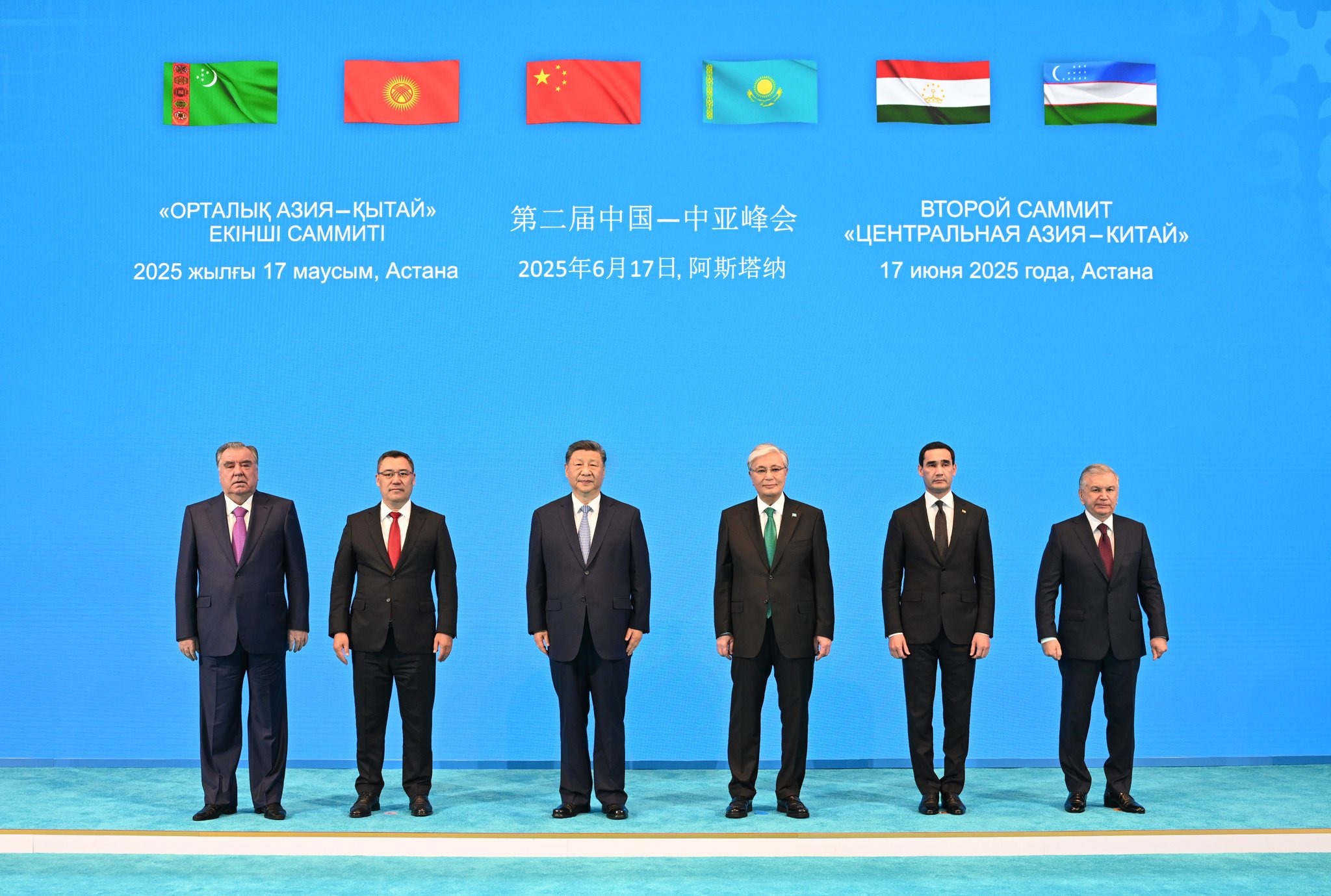
China concluded its latest engagement efforts in Central Asia on Tuesday by pledging 1.5 billion yuan (US$209 million) for livelihood and development projects in the region.
The six nations participating in the second China-Central Asia Summit also signed a historic permanent friendship treaty.
“China is ready to provide 1.5 billion yuan in grant assistance to Central Asian countries this year to support livelihood and development projects of common interest to each country,” Chinese President Xi Jinping stated in his opening address at the summit in Astana, the capital of Kazakhstan.
“Additionally, China will offer 3,000 training opportunities to Central Asian countries over the next two years.”
Xi described the signing of the Permanent Good-Neighborliness and Friendly Cooperation Agreement as a milestone in relations between the six countries, calling it “an innovative initiative in China’s neighborhood diplomacy and a contribution that will benefit future generations.”
China has signed similar agreements with Russia and Pakistan.
Xi also emphasized the need for cooperation in a world that has entered “a new period of turbulence and transformation.”
State news agency Xinhua quoted Xi as saying, “There will be no winner in a tariff and trade war. Protectionists and hegemonists will harm both others and themselves.”
“The world should not be divided, but united; humanity should not revert to the law of the jungle, but work to build a common future for mankind,” he added.
Xi also announced the establishment of three cooperation centers focusing on poverty reduction, educational exchange, and desertification control, as well as a trade facilitation platform under the China-Central Asia cooperation framework.
In a statement on Wednesday, the Chinese Foreign Ministry said that China and the Central Asian countries are eager to improve road and rail connectivity and plan to open more direct flights to and from China to increase mutual exchange.
China will consider simplifying visa procedures with the five Central Asian countries, while all parties will study the feasibility of opening consulates.
Together with Kazakhstan, Kyrgyzstan, and Tajikistan, China will accelerate the modernization of existing port facilities and assess the need for new ones.
The summit was the second of its kind, following the inaugural one held two years ago in Xian, China.
These efforts reflect a deepening of China’s relations with Central Asia, which have historically focused on areas such as transportation infrastructure.
The region is a key part of the Belt and Road Initiative, Beijing’s global development strategy, and China has invested heavily in energy pipelines, infrastructure, and mining projects in Central Asia.
However, China also wants to expand cooperation into sustainable development and renewable energy.
These investments were a major focus of Xi’s meetings with the leaders of the five Central Asian states.
During the meetings, Xi stressed the need to uphold multilateralism and the global trade order. This is part of Beijing’s effort to position itself as a more reliable partner following the US tariff war.
Meeting with Turkmen President Serdar Berdimuhamedov, Xi called for expanding gas cooperation and exploring opportunities in non-resource sectors.
Security was also on the agenda.
“The two countries should further strengthen law enforcement, security, and defense cooperation, jointly combat the ‘three forces,’ and enhance cooperation in cybersecurity,” Xi said, referring to “terrorism, separatism, and extremism.”
Beijing views these forces as threats to national and regional security, and Xi has repeatedly emphasized this stance in his meetings with Central Asian leaders.
While China’s presence in Central Asia has historically focused on economic investments, its influence in the security sphere is growing through joint counter-terrorism drills, training programs, and aid.
This is particularly true in Tajikistan, which shares a long border with Afghanistan, where China is concerned about terrorists returning to carry out operations in its western Xinjiang region.
In his meeting with Tajik President Emomali Rahmon, Xi called for deeper cooperation in law enforcement and security to combat the three forces.
He also called for increasing bilateral trade and investment and improving transportation infrastructure.
Rahmon said Dushanbe would expand cooperation in new areas such as new energy, green industries, and artificial intelligence, and would “strengthen coordination with Beijing for the Shanghai Cooperation Organisation (SCO) to play a greater role.”
The SCO is the main forum for relations between China and the landlocked region. This political, economic, and security bloc was founded in 2001 by China, Kazakhstan, Kyrgyzstan, Russia, Tajikistan, and Uzbekistan. Turkmenistan, reflecting its commitment to “permanent neutrality,” is the only Central Asian country outside the organization.
On Tuesday, Xi also held talks with Kyrgyz President Sadyr Japarov, describing relations between the two countries as being in “the best period in history.”
Xi said the construction of the China-Kyrgyzstan-Uzbekistan railway is a top priority, but new growth drivers such as clean energy, green mining, and artificial intelligence should also be developed.
The talks followed the signing of cooperation documents between China and the summit’s host country, Kazakhstan, covering trade, investment, technology, tourism, and customs.
Xi asked his Kazakh counterpart, Kassym-Jomart Tokayev, to accelerate cross-border railway projects and the improvement of port infrastructure.
Xi also stated, “Beijing and Astana should be strong supporters of each other in turbulent times.”
According to the Kazakh presidential office, Tokayev described relations between the two countries as stable and “not negatively affected by geopolitical challenges and turmoil or the international situation.”
-

 Diplomacy1 week ago
Diplomacy1 week agoFormer diplomat warns forcing Iran out of the NPT is the greatest danger
-
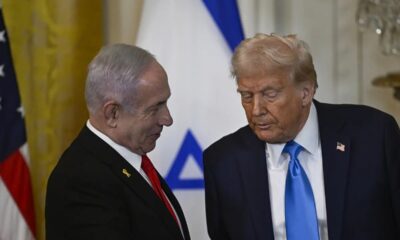
 Middle East2 days ago
Middle East2 days agoUS to launch major bombing campaign against Iran this weekend, Hersh reports
-

 Opinion2 weeks ago
Opinion2 weeks agoEuropean defense autonomy and Germany’s military role enter a turning point
-
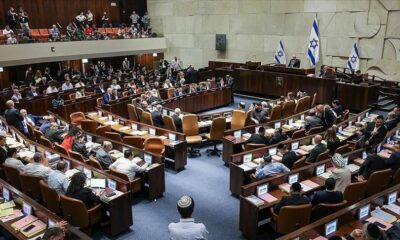
 Middle East1 week ago
Middle East1 week agoNetanyahu’s government survives no-confidence vote as Haredi crisis is delayed
-

 Diplomacy1 week ago
Diplomacy1 week agoFormer CIA analyst says Israel used ceasefire talks as a trap
-

 Asia2 weeks ago
Asia2 weeks agoJapan, US showcase B-52 bombers in nuclear deterrence dialogue
-

 Middle East5 days ago
Middle East5 days agoIran targets Mossad and Unit 8200 in missile attack on Tel Aviv
-

 Middle East7 days ago
Middle East7 days agoIranian missile attack causes heavy damage across Israel








